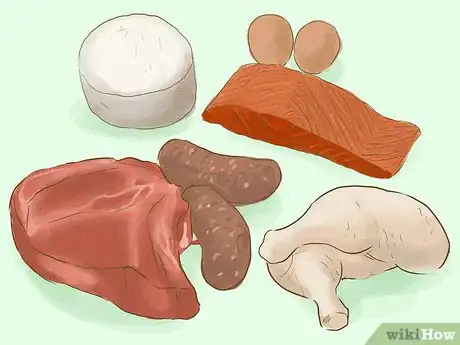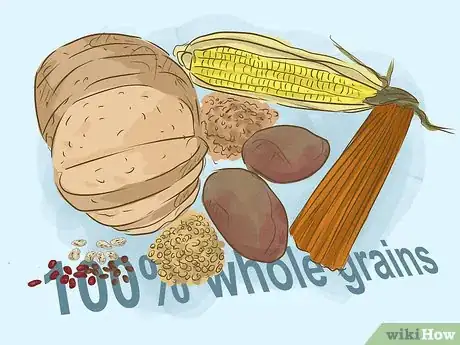This article was co-authored by Claudia Carberry, RD, MS. Claudia Carberry is a Registered Dietitian specializing in kidney transplants and counseling patients for weight loss at the University of Arkansas for Medical Sciences. She is a member of the Arkansas Academy of Nutrition and Dietetics. Claudia received her MS in Nutrition from the University of Tennessee Knoxville in 2010.
There are 11 references cited in this article, which can be found at the bottom of the page.
This article has been viewed 14,646 times.
Vegetarian and vegan diets have been around for a long time. However, not everyone can conform permanently to a meatless eating pattern. It's hard to limit meat, poultry, eggs and dairy. They're in a large variety of foods and many people really enjoy eating them. A flexitarian diet pattern is one where you can enjoy the best of both worlds. You can enjoy the occasional meat, egg, or dairy product but also see some of the benefits that are associated with vegetarian or vegan eating patterns (like weight loss or decreased cholesterol).[1] Try following a flexitarian diet instead of being 100% vegetarian or vegan.
Steps
Following a Flexitarian Diet Pattern
-
1Define moderation for you. The best part of a flexitarian diet is that you have full control over what animal products you eat and how often. But to help you follow a more structured pattern, you'll need to define moderation of animal products.[2]
- Flexitarian eating patterns vary greatly. You may only eat meat or other animal products occasionally or you may eat them once a week.
- Set a specific goal for yourself and your eating pattern. This will make following a flexitarian diet much easier. For example, you can set a goal like: I will include dairy products regularly and eat meat (like red meat or poultry) only twice per week.
- Set specific days to go meatless. It might also be helpful to set specific days to go meatless. You can try meatless Mondays, for example.
- Choose what animal products you want to include. Everyone has different preferences on what foods to include in their flexitarian diet. This again, is a decision you'll need to make. Consider whether or not dairy, eggs, or seafood will be included and how often.
-
2Add foods to your diet, don't subtract. One good trick to making this diet style feel more naturally enjoyable (instead of restricted) is by adding foods to your diet. You may be more successful this way instead of restricting a bunch of different foods.[3]
- The more you restrict yourself and the more foods you don't allow, the more difficult a specific diet can be.
- Instead of ruling out a bunch of different meats, dairy products, eggs or fish that you cannot eat, consider adding different types of proteins or other foods to your diet.
- For example, instead of saying you won't eat beef again, say that you'll eat beef once a month and focus mainly on adding more seafood and vegetarian protein sources to your diet.
Advertisement -
3Try new recipes. With any new type of diet or eating pattern, it can be difficult to figure out what exactly you're supposed to eat or cook everyday. Give yourself some ideas by looking up great recipes that are flexitarian.
- Consider doing some research online for flexitarian recipes. You might find some great ideas of traditional dishes that use vegetarian or vegan protein sources instead.
- For example, you might find a recipe for mushroom stroganoff instead of beef stroganoff.
- You may also want to consider getting some cooking magazines or cookbooks that offer some guidance on flexitarian eating and cooking.
-
4Consider writing up a meal plan. To go along with your goal setting and moderation, you may want to write up a meal plan. This can help put your goals into practice and allow you to follow a flexitarian diet a little more easily.
- To help you stick to your goal, write up a meal plan for a week. Planning in advance can help you see what days you'll be including meat or other animal products and what days you need to stick to more vegetarian based meals.
- Make sure to include all breakfast, lunches, dinners and snacks that you plan on eating for a week.
- Meal plans help you stay on track, help you eat foods that you actually have at home and can help you save a little money.[4]
- Plan what days or meals that you're going to be eating only vegetarian or vegan items and what days you'll include some of your animal proteins.
Making Substitutions for Animal Products
-
1Try meat substitutes. If you haven't tried a vegetarian or vegan diet before, it may be a little easier to transition with meat substitutes.[5] These foods are meant to replace certain meats so you don't miss their animal-based counterparts as much.
- Many meat substitutes that you can find include: burgers, hot dogs, sausages, bacon, cheeses, chicken nuggets, chicken strips, and even ground beef.
- You can find meat substitutes at your local grocery store. Many can be found in the produce section but also can be found in the freezer aisle of your store.
- These are a great place to start with meatless meals. You can replace your normal Friday night burgers with veggie burgers instead.
-
2Include tofu, tempeh, or seitan. If you've thought about transitioning to a vegetarian or vegan diet before, you may have heard of items like tofu, tempeh, or seitan. They're great replacements for meat in many recipes.
- Both tempeh and tofu are made from fermented soybeans. Tofu is a little more spongy and soft while tempeh is much more firm and chewy.
- Both are very high in protein and do well in recipes as they absorb flavors of marinades and can be cooked in a wide variety of ways.
- Seitan may be a little less common. It's made from wheat gluten and has a similar texture to meat. It also is high in protein and is great cooked a variety of ways.
-
3Add in a few servings of legumes. If you're not a huge fan of tofu or tempeh, you can always add in more legumes to your diet. These fiber-rich foods are also high in protein and can be a great base for a vegetarian meal.
- Legumes are a group of plant-based foods that are high in protein.[6] They include items like nuts, beans and lentils. In addition, there are many types of each of these legumes.
- Beans and lentils are particularly high in fiber. They're great served warm or cold as well. Served in a soup, salad or in a main dish, both beans and lentils are great options for vegetarian protein.
- Nuts aren't usually cooked, but they're still a great source of protein. You can toss them into salads, on your yogurt or oatmeal, or use nut butters on whole grain bread.
-
4Eat both vegetarian and animal proteins in one meal. If you think it'll be hard to eat meals that are only vegetarian or vegan, you may want to make each meal flexitarian.
- Try including both vegetarian or vegan proteins in addition to animal proteins in each meal or snack.[7]
- For example, serve yourself half of a portion of animal-based protein and 1/2 a portion of a vegetarian protein.
- Serving both allows you to enjoy the best of both worlds, but also forces you to eat a little less of the animal-based proteins.
-
5Include umami-like flavors in meals. If one of the reasons you want to follow a flexitarian like eating pattern is because you crave meat, you might be able to manage those cravings. Serving the right types of foods can help you manage those meat cravings and stick to a flexitarian style diet more easily.[8]
- Some flavors are called umami. This means they're savory and rich (unlike the other tastes of sweet, bitter, or sour).
- Umami is a newer taste that has been discovered in a very specific group of foods. However, this taste can help satisfy those cravings for savory, rich meat products.
- Umami is found in the following foods: tomatoes, miso, mushrooms, parmesan cheese, and soy sauce. Cooking with these foods can help satisfy cravings.
Making Your Flexitarian Diet Balanced
-
1Include a wide variety of foods - especially protein. Regardless of what type of diet or eating pattern you follow, it's important to follow a balanced diet. Flexitarian diets are easy to keep balanced since they will include a large variety of foods.
- One of the main foods you want to eat adequate amounts of and have a large variety of is protein. Include servings from the legumes group, occasionally meat or poultry group, shellfish, tofu or tempeh, and meat substitute group.
- Also include a food from every food group each day. Include fruits, vegetables, dairy (if you're including this in your diet), and whole grains. This helps keep your diet balanced.[9]
- Vary your choices from other food groups. Choose a wide variety of grains, fruits, and vegetables. This helps ensure you're eating a wide variety of nutrients.
-
2Opt for leaner sources of protein. When you do choose animal-based protein foods, it's important to try to include mostly lean proteins. These are low in calories and can help you meet your daily protein needs.
- One benefit of vegetarian or vegan protein sources (like tofu or beans), is that these foods are naturally low in fat and calories but also high in fiber. They're very nutrient dense foods.[10]
- Animal proteins - like poultry, beef, eggs, seafood or dairy - can be higher in calories and fat. In addition, some of these fats (like saturated fats) are not good for your body.
- Choosing lean protein sources is your best option. They're low in saturated fats, calories and still high in protein. Try white-meat chicken, turkey, eggs, low fat dairy, unprocessed pork, seafood, and lean cuts of beef.
- Regardless of what type of protein you do choose, make sure to measure out the appropriate portion. Stick to 1/2 cup or 3-4 oz per serving.[11]
-
3Choose 100% whole grains. The grains food group is another important food group when following a flexitarian diet. They can help provide additional nutrients and keep your diet balanced.
- If you choose to include grains in your diet, try to choose 100% whole grains. These foods are less processed and are higher in fiber.
- Whole grains also contain some protein. In fact, when combined with a vegetarian protein source (like beans, nuts or lentils), they make a complete protein and provide your body will all the essential nutrients it needs.[12]
- Try whole grains like: quinoa, oats, brown rice, millet, farro, whole wheat bread, or whole wheat pasta.
- Also measure your portions of grains. Measure out about 1/2 cup of cooked grains or about 2 oz.
-
4Make half your plate a fruit or a vegetable. When you're following a flexitarian diet, it's very important to emphasize fruits and vegetables. These foods are really what make a flexitarian diet nutritious.
- Fruits and vegetables are always going to be vegetarian or vegan so they fit in seamlessly to your diet. In addition, they provide the bulk of your fiber, vitamin, and antioxidant needs everyday.
- Health professionals recommend that you aim for at least 5-9 servings of fruits and vegetables everyday. Meeting this guideline helps ensure you're getting a wide variety of nutrients.[13] [14]
- Measure out the appropriate servings of these foods. Go for 1/2 cup of fruit or 1 small piece, 1 cup of vegetables, or 2 cups of leafy greens per serving.
References
- ↑ http://www.womansday.com/health-fitness/nutrition/advice/a3861/can-you-be-a-part-time-vegetarian-77888/
- ↑ http://www.womansday.com/health-fitness/nutrition/advice/a3861/can-you-be-a-part-time-vegetarian-77888/
- ↑ http://www.womansday.com/health-fitness/nutrition/advice/a3861/can-you-be-a-part-time-vegetarian-77888/
- ↑ http://www.mayoclinic.org/healthy-lifestyle/nutrition-and-healthy-eating/in-depth/menu-planning/art-20048199
- ↑ http://www.womenshealthmag.com/food/best-meat-substitutes
- ↑ http://ajcn.nutrition.org/content/70/3/439s.full
- ↑ http://www.womansday.com/health-fitness/nutrition/advice/a3861/can-you-be-a-part-time-vegetarian-77888/
- ↑ http://www.womansday.com/health-fitness/nutrition/advice/a3861/can-you-be-a-part-time-vegetarian-77888/
- ↑ http://www.nhs.uk/Livewell/Goodfood/Pages/Healthyeating.aspx

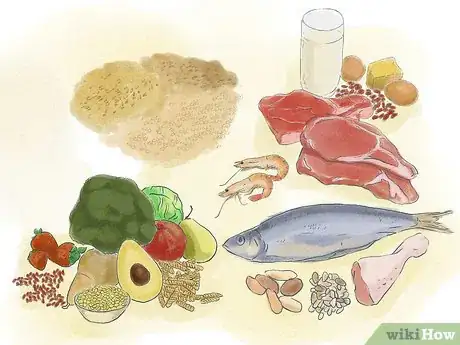
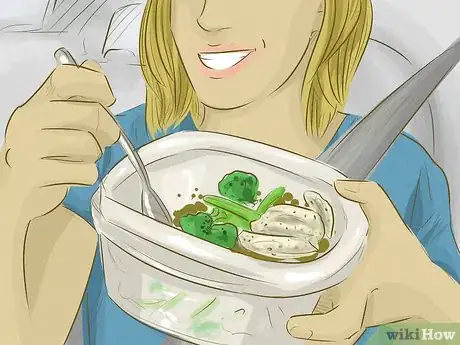

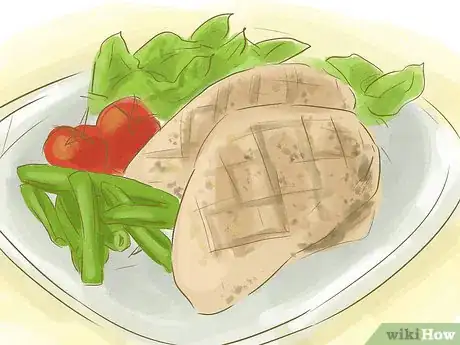

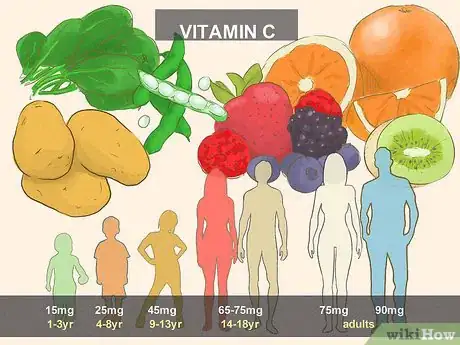
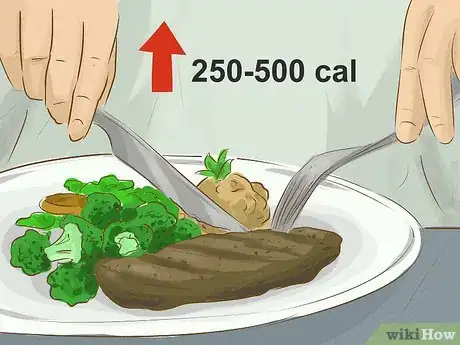
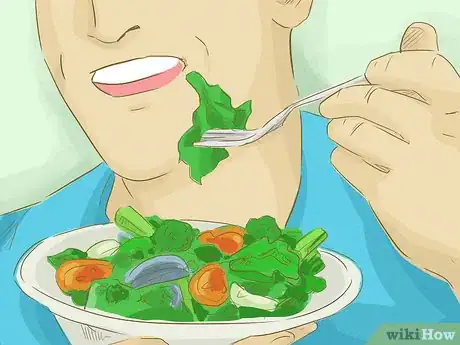
-Step-17.webp)
